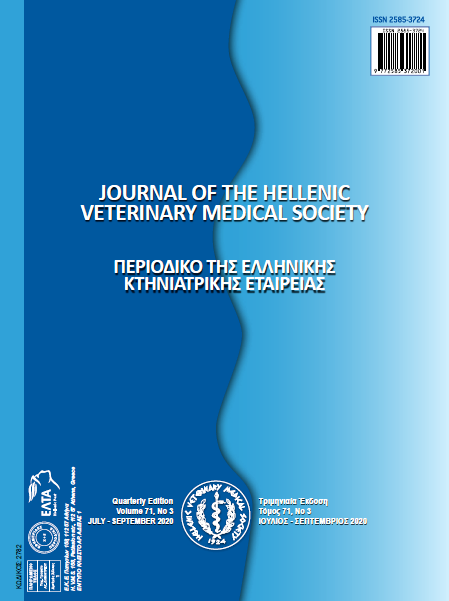Blood Metabolic Profile in Barki Ewes during Transition Period

Abstract
This technical research article investigated the changes in the hemato-biochemical profile in Barki ewes during the transition period. A total of 15 healthy pregnant Barki ewes (age, 4.9 ± 0.7 years old; weight, 38.5 ± 4.9 Kg) were randomly selected for the current study. Blood samples were collected from the selected ewes via jugular vein puncture during the transition period at five different time points; 4 and 2 weeks prior the estimated date of delivery (EDD), at the parturition time, then at 2 and 4 weeks post-partum. Red blood cells (RBCs) count and packed cell volume (PCV) were significantly (P<0.05) decreased 2 weeks before the EDD and at the parturition time. Mean corpuscular volume (MCV) was significantly (P<0.05) decreased 4 weeks post-partum. The neutrophil count and neutrophil/lymphocyte ratio were significantly (P < 0.05) increased 2 weeks post-partum. The level of β-hydroxy butyric acid (BHBA) and concentration of non-esterified fatty acid (NEFA) in the serum were significantly (P<0.05) increased 2 weeks before EDD, at the parturition time, and 2 weeks post-partum. Both cholesterol and triglyceride levels increased significantly (P<0.05) 2 weeks before EDD and at the parturition time. Leptin level was significantly (P<0.05) decreased at 2 weeks and 4 weeks post-partum. Glucose level increased significantly (P<0.05) at the parturition time then decreased significantly (P<0.05) at 2 weeks post-partum, after which it increased again 4 weeks post-partum. Total protein level was significantly (P<0.05) increased 2 weeks post-partum. The level of both calcium and inorganic phosphorus was significantly (P<0.05) decreased at the parturition time and 2 weeks post-partum. The results revealed that Barki ewes showed profound physiological alterations during the transition period which are not necessarily indicative of a disease, but reflect physiological variations. Therefore, metabolic profile test was needed to determine the nutritional status of Barki ewes, and to take the possible preventive measures that increase ewes’ productivity and predict health disorders.
Article Details
- How to Cite
-
EL-SAYED, A., EL-ASHKER, M., IBRAHIM Η., SHOIEB, S., IBRAHIM, F., YOUSSEF, M., & EL-KHODERY, S. (2020). Blood Metabolic Profile in Barki Ewes during Transition Period. Journal of the Hellenic Veterinary Medical Society, 71(3), 2261–2266. https://doi.org/10.12681/jhvms.25070
- Issue
- Vol. 71 No. 3 (2020)
- Section
- Research Articles

This work is licensed under a Creative Commons Attribution-NonCommercial 4.0 International License.
Authors who publish with this journal agree to the following terms:
· Authors retain copyright and grant the journal right of first publication with the work simultaneously licensed under a Creative Commons Attribution Non-Commercial License that allows others to share the work with an acknowledgement of the work's authorship and initial publication in this journal.
· Authors are able to enter into separate, additional contractual arrangements for the non-exclusive distribution of the journal's published version of the work (e.g. post it to an institutional repository or publish it in a book), with an acknowledgement of its initial publication in this journal.
· Authors are permitted and encouraged to post their work online (preferably in institutional repositories or on their website) prior to and during the submission process, as it can lead to productive exchanges, as well as earlier and greater citation of published work.


